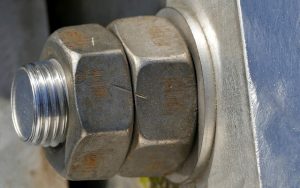
Have you ever tried to remove a nut or bolt, only to discover that it’s stuck? Fasteners are commonly used in airplanes to hold parts together. With the exception of rivets, most fasteners are removable, meaning you can remove them from the parts with which they are used. If a fastener experiences galling, however, you may struggle to remove it.
What Is Galling?
Galling is a phenomenon in which two or more metal objects, such as fasteners, rub and stick together. It’s essentially a form of cold welding. When two or more metal objects rub together, material transfer will occur. Some of the material from one of the objects will transfer to the other object and vice versa. The objects will then become stuck together.
What Causes Galling?
Excessive or prolonged friction is one of the leading causes of galling. Friction, of course, is a resistive force. It involves an object resisting the force of another moving object to which it’s exposed.
When left unchecked, friction can wear down the surface of metal objects, including fasteners. Superficial damage will occur on the surface of the objects. As material from the objects mix together, the objects will become stuck together.
Galling Prevention Techniques for Fasteners
There are several things you can do to prevent galling when using fasteners. Choosing high-quality fasteners, for instance, will lower the risk of galling. Cheap or otherwise low-quality fasteners are often softer and more ductile than their high-quality counterparts. When exposed to friction, they may quickly wear down while succumbing to galling.
Surface-treated fasteners are less likely to experience galling than traditional, non-surface-treated fasteners. Fasteners are available in a variety of surface finishes. A surface finish is a coating that’s applied over the base material. Common types of surface finishes for fasteners include zinc and cadmium, both of which add an extra level of protection against galling.
Surface treatments such as coatings or platings can improve the surface finish of fasteners, reducing friction and minimizing the risk of galling. Popular coatings include zinc plating, cadmium plating, and various forms of corrosion-resistant coatings.
A little lubrication goes a long way at protecting fasteners from galling. There are anti-galling products available. Anti-galling products typically contain lubricating compounds that reduce friction and, thus, prevent galling.
Another tip to prevent galling is to avoid over-tightening fasteners. The tighter you make a fastener when installing it, the greater the risk of galling. Over-tightening will increase pressure on the fastener, allowing for faster premature and tear.



